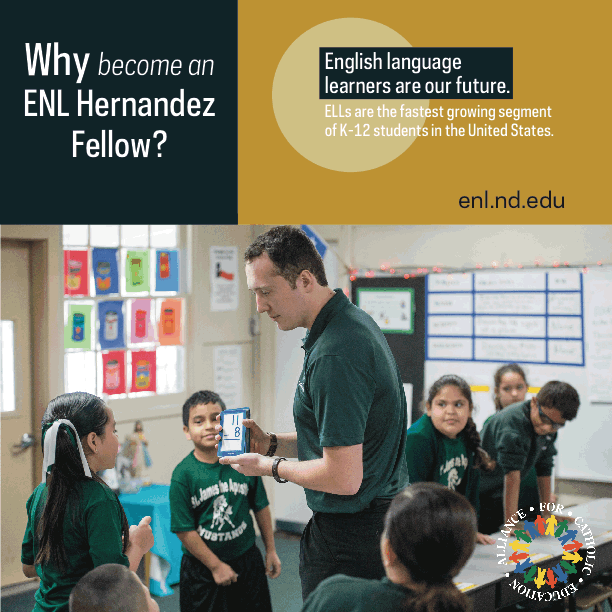What We Do
ENL has a threefold approach to helping Catholic schools ensure that their English language learners thrive. ENL helps schools and teachers develop a deep understanding of the process of language acquisition, employ research-based instructional strategies, and cultivate culturally sustaining classrooms.
ENL transforms schools in 3 strategic ways:
Forming Teacher-Leaders
The ENL Hernandez Fellows are Catholic school teachers and principals who seek to deepen their expertise in educating linguistically diverse populations by taking six courses (18 graduate-level credits) online during the summer and throughout the year. Learn More...
Strengthening Instruction by offering Professional Development
ENL professional development takes on two forms: onsite professional development and online modules. ENL professional development is intended to to improve instruction for English language learners, develop a common language among educators, and promote culturally sustaining pedagogy. Learn More...
Sharing Resources
Visit our compilation of ENL resources tailored for the specific realities of Catholic schools. Resources include an English Oral Language Assessment (EOLA), webinars, eLearning tips, videos, theological resources, multicultural literature, and relevant research. Learn More...
The Need

"1 in 4 U.S. school children will be an English language learner in the next twenty years."
(Goldenberg, 2008)
Their success is our legacy.
51%
Increase in the percentage of ELLs in schools from 1998-99 to 2008-09. English Language Learners are the fastest growing population of students in the U.S. (NCELA, 2011).
Become an English as a New Language trained teacher to meet this growing need: enl.nd.edu/apply
70%
Percentage of ELL students who are born in the U.S. (Batalova, Fix, & May, 2005).
Utilize home language surveys to identify English language learners and discover more about a student’s home language. Language diversity enriches your school.
381
The number of languages that are spoken at home by children in U.S. schools (ACS, 2011). For the 2009-2010 school year, 80% of Limited English Proficient (LEP) students spoke Spanish as their first and only language (NCELA, 2013).
Access our free resources to learn more about strategies, pedagogy, and assessment that support English language learners in the classroom.
7-10
The average number of years it takes an ELL to acquire academic language. In contrast, it takes a student 1-3 years to acquire proficiency in social language (Cummins, 1991).
Remember that students that may sound fluent in English on the playground may experience language barriers in the classroom. Consider the role that content-specific academic language plays in lessons and begin intentionally supporting language growth with scaffolding and language objectives.
4
The number of domains of language - Listening, Speaking, Reading, and Writing.
Consider how all four domains are utilized in lessons and recognize that an ELL may be stronger in one particular area and greatly challenged by another.
1
One teacher can make all the difference in the life of a child learning English.
Join the movement to ensure English language learners are thriving in Catholic schools. Apply to become a Hernandez Fellow.














